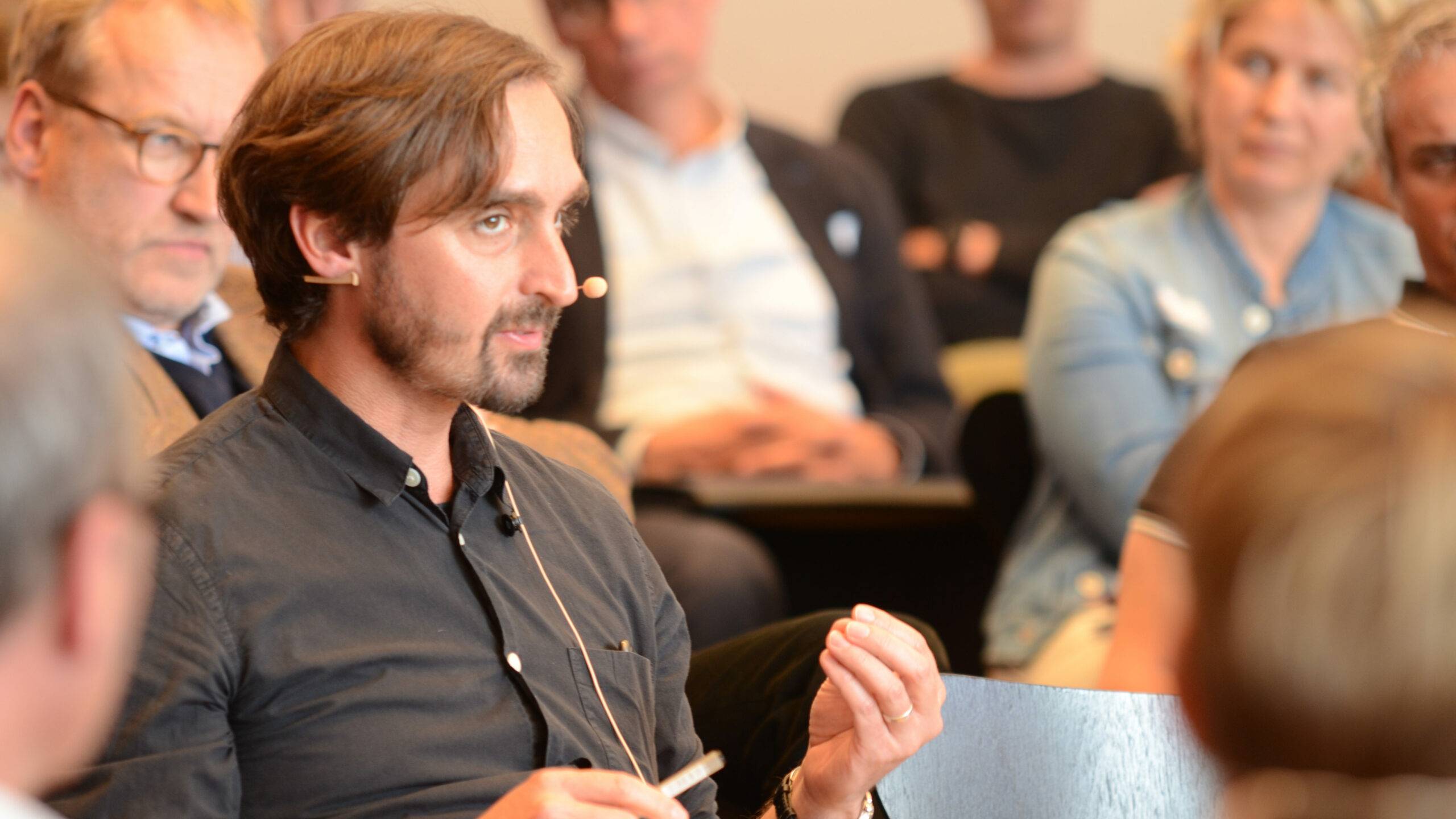Your lecture was titled “Interdisciplinary Processes Swedish Style”. Can you tell us a bit more?
The Chamber of Architects plays an important role in the development of the architect’s role in Germany. Plan B is a lecture and workshop format, which was held for the thirteenth time this year. The focus was to look at how changes in society, politics, climate and technology affect our profession and how offices need to be managed in different ways to stay innovative and secure talented employees. I presented our interdisciplinary way of working at White. We’re a flat organisation in which we share the same core values. We use these as tools to meet the challenges society is facing right now, such as climate change and social inequalities.

Swedish working style – a role model in Germany
Max Zinnecker, architect SAR/MSA at White, was invited this week to give a keynote lecture at Plan B_13. The seminar, titled “Architect 2030 – The Future of Office Structures, Planning and Construction Processes”, was organised by the Baden-Württemberg Chamber of Architects in Stuttgart.
What was the response from the audience?
Many German offices want to move from a hierarchical to a flat organisational structure, much due to the generational shift. The audience was very interested in our employee-owned structure that allows everyone to buy shares in the company and receive dividends from the annual profit. The audience also reflected on their need to continue their work related to gender equality and flexible working hours. The latter is unfortunately still not common in Germany and I felt proud to be able to contribute with just that to the discussion.
So how are German architecture firms organised?
As responsibilities are largely extended compared to Swedish architects, the organisation often reflects that through more controlled processes, which certainly leads to more hierarchical structures. Our way of working is based on trust – we trust that every employee acts professionally regarding their work load and quality, which allows everyone to take more responsibility. It is a large advantage for us that we already work like this, a style that Germans still call “Work 4.0”, a future scenario.
What are the benefits of working on the German market?
I believe that German architects are very good with technical matters, such as construction details, the Passivhaus standard, CO2-neutral buildings, the cradle to cradle approach or wood construction. We can learn a lot from our colleagues over there! Conversely, I would say that in Sweden we are leading in sustainable urban design, especially in social sustainability. The Swedish way of seeking consensus is also a role model for many in Germany. Finally, there is a huge demand for housing, schools and healthcare projects in Germany. We have broad experience of working within these areas and strongly believe that our approach can make a difference. On a more personal level it is very pleasing to work in my home country while representing our Swedish practice.
What is White up to in Germany at the moment?
The Campus Feuerbach school project in Stuttgart that we are planning together with Günther Hermann Architekten is advancing well, the next phase is scheduled for after the summer.